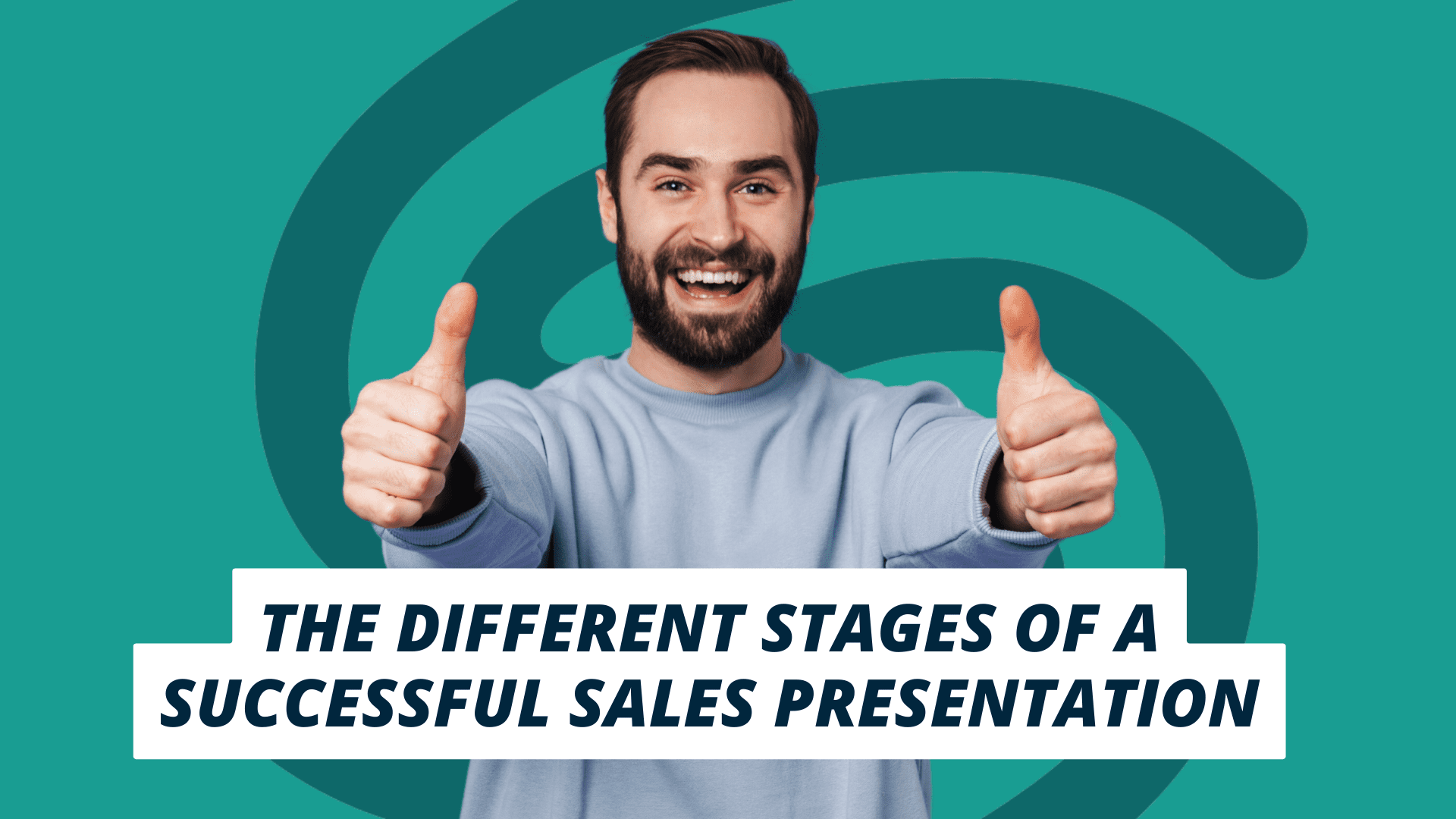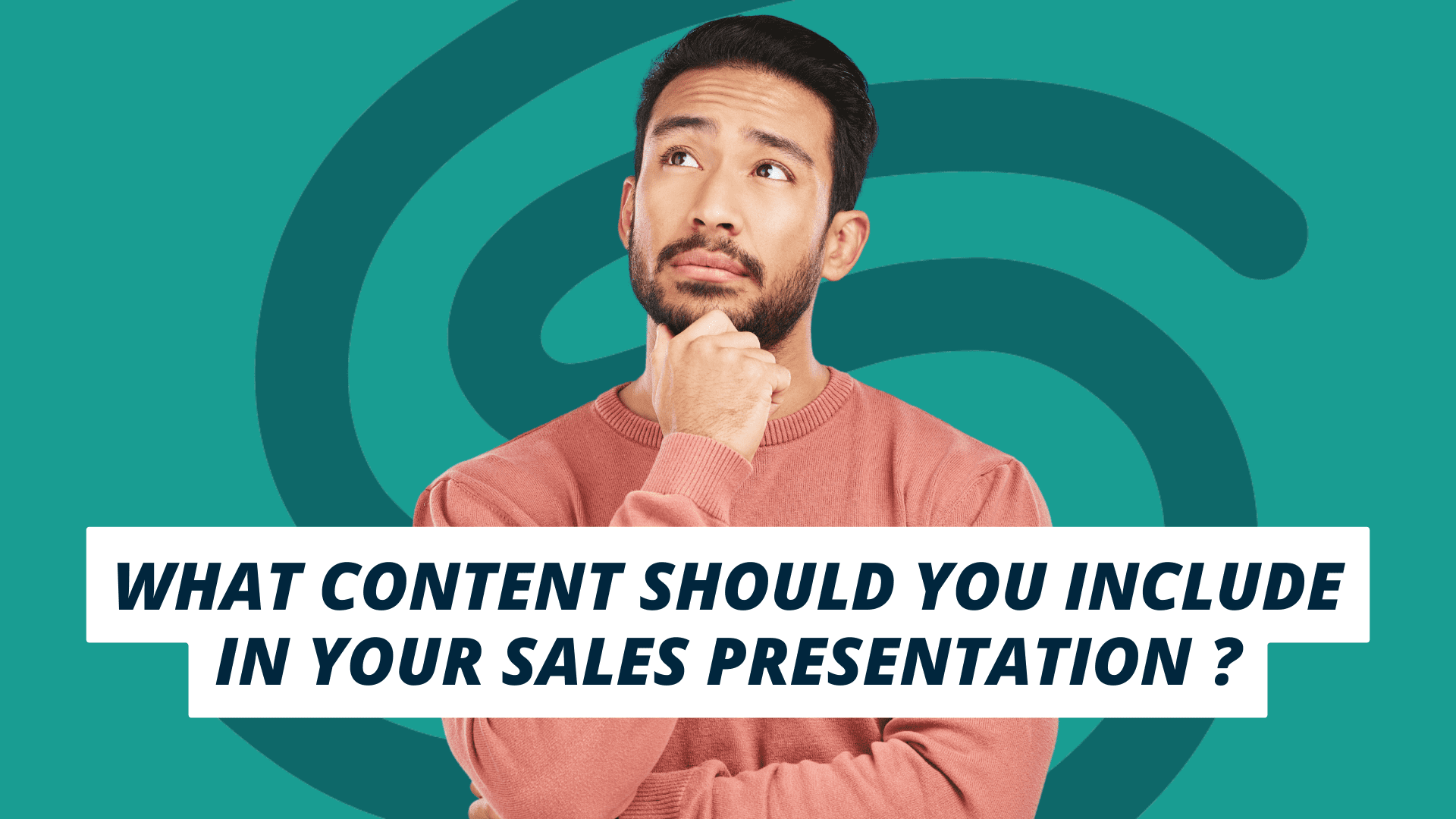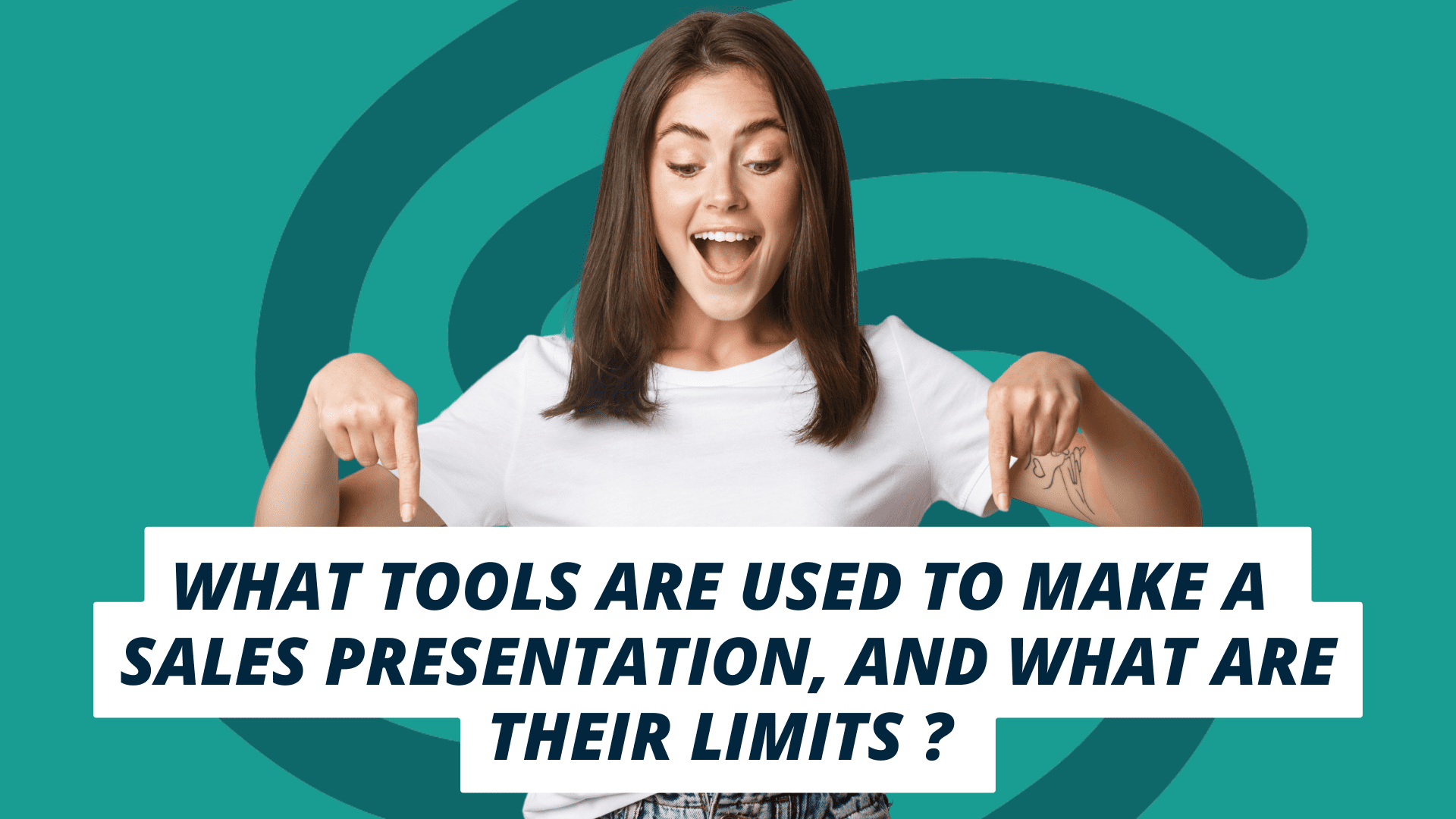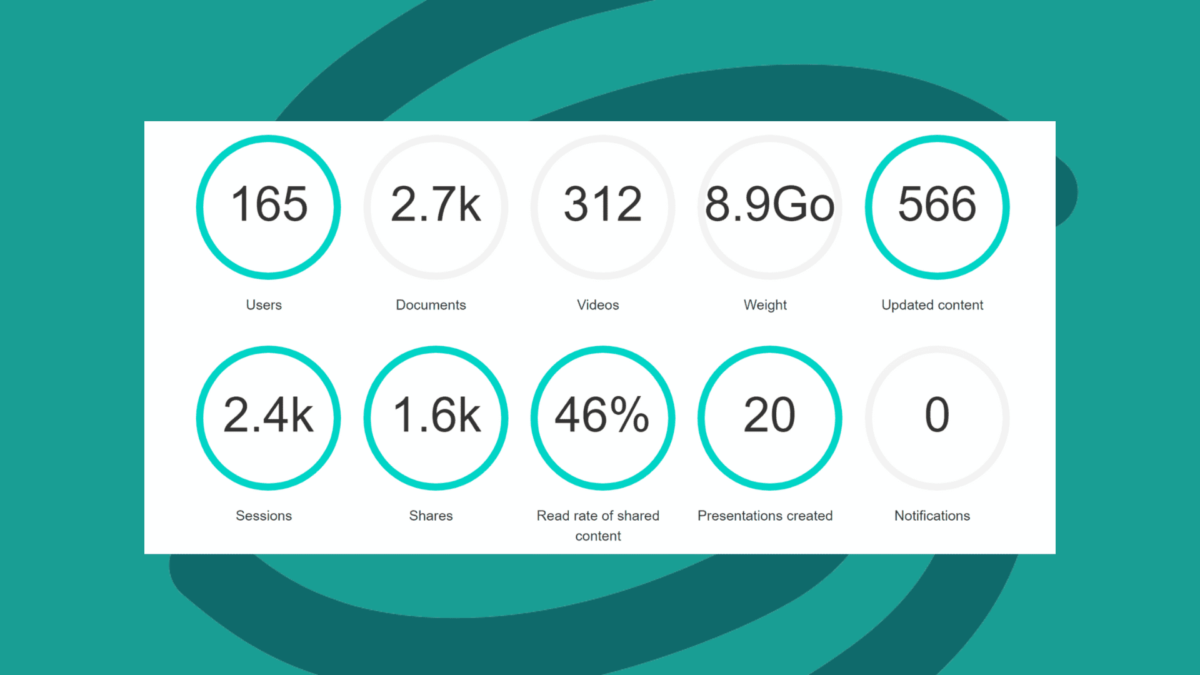
Blog
How to make a convincing sales presentation?

What is a sales presentation?
As the name suggests, a sales presentation is a presentation made by a salesperson with the aim of selling his or her product or service. It includes the salesperson's pitch and his or her sales support, which is there to support the sales pitch to the buyer. Whether it's during a one-to-one physical meeting or at a distance, a sales presentation brings together the salesperson, the buyer, whatever their function, and the other parties involved in the proposed solution.
Why make a sales presentation?

Salespeople are faced with a more demanding and autonomous buyer. Buyers carry out 57% of their purchasing process before initiating contact with the supplier they are considering (Accenture), and call on sales at the very end of the purchasing process. When this time comes, the salesperson must be ready! They need to be able to convince and inspire if they hope to sell their product/service. In this sense, the sales presentation is a means of enlightening the buyer, reassuring him, guiding him towards the best options and reinforcing his purchasing decision. To succeed in this mission, the salesperson needs to know the person he or she is talking to, the business he or she is in, the challenges he or she is facing, how to identify his or her expectations or needs, and how to validate them within the framework of an exchange that is as interactive as possible. Of course, they also need to master their offer/service in order to answer the other person's questions, and to demonstrate their expertise through their ability to contextualize what they have to say, backed up by an effective sales presentation.
The different stages of a successful sales presentation

1. Preparing your presentation
80% of the success of a sales meeting depends on the quality of its preparation. Beyond knowing your offer inside out, preparing for a meeting means first and foremost getting to know your prospect, his business, his current situation, his market, and preparing the relevant and useful questions that will enable you to best contextualize your sales approach and personalize your offer. By preparing for your meeting, you'll also be able to anticipate your prospects' objections, making your sales pitch all the more convincing. This preparation is crucial to ensuring an efficient and professional approach to the meeting.
2. Understanding the buyer's needs
One of the golden rules of sales is active listening, and therefore the ability to ask the right questions as you go along. By strengthening your understanding of your buyer's issues, you'll be able to pinpoint his or her expectations and needs all the better, so you can make the right offer. This greatly increases your chances of closing the sale successfully in the short to medium term.
3. Adapting speech and presentation
To get the buyer's attention, salespeople need to contextualize their approach, personalize their presentation, and create the most interactive sales experience possible, while giving rhythm to the exchange with a precise, controlled discourse.
4. Answering questions: the right argument at the right time
With his expert vision, the salesperson must adopt the role of "sense-maker" in the midst of all the information to which the buyer has been exposed during his purchasing journey. He or she must guide them in a natural way to make an informed decision. At this stage, he or she can reassure the buyer about his or her forthcoming choice, using precise, hard-hitting arguments.
5. Highlight advantages/benefits rather than functionalities
During the presentation, the buyer must perceive the added value of the solution. This added value depends on the salesperson's ability to convey the benefits of the solution. Buyers must really understand what they stand to gain, both for themselves and for their teams.
6. Draw up and submit a customized proposal
The sales proposal is a synthesis of the information presented during the meetings. It includes elements relating to the context, the functional and technical dimensions of your service or product, the implementation schedule or delivery date, and of course a financial component. This proposal must provide a relevant solution to the buyer's needs, and trigger the act of buying.
What content should you include in your sales presentation?

The biggest challenge for B2B buyers is not finding relevant, useful content. There's plenty on offer. What they do struggle with is sorting, organizing and projecting the solution they're looking at into their environment, to ensure they make the best buying decision. The marketing content to be used in your sales presentation must therefore be designed with this in mind, contextualized and support the sales person in a "meaning-making" approach. This content must enable you to contextualize your approach and sales pitch according to the profile of the buyer you have met or are about to meet. Content can take many forms (documents, images, videos, 3D simulations, etc.) and depends on several factors: the type of message to be delivered, thecompany and its sales approach, the buyer's stage in the sales cycle, and the PODs (Points of Differentiation or competitive advantages) to be promoted. You can, for example, use content focusing on the company's missions & values, content highlighting your offer/service and the business sectors in which you operate, your step-by-step support, your customers and your achievements, your commitment to CSR... There are no limits insofar as the Sales Enablement application enables all marketing content, available offline, to be embedded and deposited in intuitive sales paths for the salesperson. The importance of content varies according to the buyer, so there's no need to create a 100-slide sales presentation (made with slide design software) and overwhelm the buyer with too much information. We'll see in the last part of the article that the Sales Enablement application is an excellent way of defining what content to add to your sales presentation.
What tools are used to make a sales presentation, and what are their limits?

There are many tools available for making presentations. The first was Power Point in 1984. This period coincided with the rise of the Mac, personal computers and the first graphical user interfaces. Its inventor, Robert Gaskins, believed that the adoption of personal computers would lead to the need to design one's own presentations. A hunch that proved correct! Over time, other slide design tools have joined the market. Among the best-known are Keynote (2003), Google Slide (2006), Canva (2012) and Plezi (2015). Although these tools are suitable for professional or personal presentations, they don't meet today's appointment challenges or buyers' expectations in terms of customer experience, unlike a Sales Enablement application. Can we ensure that the salesperson presents the right content to the right person at the right time? Can the marketing team track the content presented during appointments and measure its performance? Can salespeople contextualize their approach with precise content tailored to each type of buyer? Can they deliver an optimal customer experience in Offline mode? ... As you can see, Sales Enablement goes far beyond simple presentation logic, and offers numerous advantages to the sales & marketing teams equipped with it. With Salesapps, no more sleepy sales presentations, uncharted, out-of-date or poorly personalized for the buyer. No more time wasted searching for content in a Drive, or building endless presentations with inappropriate messages. No more wasting money on marketing content that is not used by the salesperson... With Salesapps, everything is tailor-made to guarantee the salesperson an optimal sales experience during appointments.
Sales Enablement for a successful sales presentation

The Sales Enablement application is a powerful tool that supports salespeople in their day-to-day work. It improves their performance at every stage of the sales process, making them better equipped to create a new sales experience with the buyer, enhance the value of their offer and sell more.
1. Speed up the preparation of your sales presentation

Salespeople spend only a third of their time on their core business: selling. A Jeff Ernst study underlines this: 65% of a salesperson's time is not dedicated to sales (meetings, content research, CRM entry, etc.). This trend has been confirmed by a study from Value Selling Associates, which shows that 36% of sales reps 's time is spent preparing for customer meetings (building proposals and researching content). The aim is to free up salespeople's time by eliminating time-consuming or administrative tasks, so that they can devote more time to selling. The Sales Enablement application does just that! By centralizing all marketing content, sales reps can quickly and easily access the marketing content they need to prepare their sales presentation. The result? According to Hervé Carette, Innovation Project Manager at EDF, it saves an estimated 45 minutes in meeting preparation time.
2. Measuring the performance of appointment content

The other strength of the Sales Enablement application lies in its ability to provide marketing teams with statistics on the use of content used during the sales presentation. This is a crucial element, especially in view of the fact that 91% of B2B companies invest in the creation of marketing content, but only 35% of them measure its ROI (Smart Insight). This bad habit is exacerbated by the lack of functionality offered by the vast majority of presentation tools on the market, which are not designed for appointments sales reps. In contrast, the Sales Enablement application gives marketing teams real visibility over what is presented during a sales meeting, whether face-to-face or remote. The application's administrator can track KPIS such as the sales path used during appointments, the read rate of shared content, the number of presentations created by sales reps, the top 10 most consulted content (documents, images, videos) during appointments... The marketing team thus positions itself in a continuous improvement process by duplicating the sales approach of the best to the entire sales force, and by having the keys to arbitrate its investments in terms of content creation.
3. Improve the effectiveness of your sales reminders

The sales presentation is over. In an ideal world, you'd leave with a signed purchase order, but most of the time, the question arises of follow-up and "When is the best time to follow up with the buyer? Too early, the reminder would be useless; too often, the buyer would have the impression that you're too insistent; too late, he might already have made progress with your competitor! The right timing of your reminders is therefore key to your success. To avoid this kind of situation, the Sales Enablement application enables you to track all the content shared with the buyer: what content has the buyer consulted or not? how many times? Has it been shared with others? How many days after the sales presentation did this happen? This information provides the sales rep with precise information on the best time to organize his follow-ups, and above all on the type of message he will be able to rely on. In this way, sales reps can increase their conversion rate and sell more.
See also our article on Sales Enablement and remote sales presentation.
FAQ
What is a sales presentation?
A sales presentation is a presentation with a sales aid in which the salesperson pitches his or her product or service to a buyer with the aim of selling the ideal solution.
How to make a successful sales presentation?
Preparation is a key element in the success of a sales presentation. Other important elements such as the sales support used, the sales pitch, the experience conveyed during the meeting and the ability to personalize your approach are all essential to the success of your sales meeting. Turn your prospects into customers with Sales Enablement.
How to make a good sales presentation?
Don't just make a good presentation, aim to achieve your goal on the day. Preparation is key, and so are the questions you ask to understand the buyer's needs. Help them to make the right decision. Personalizing your presentation and using high-impact marketing content(visuals, etc.) also play a key role in its success.
What tools are needed for a successful sales presentation?
Many tools (PowerPoint, Keynote, Google Slide, Canva, Plezi) are designed for presentation purposes, but are by no means suitable for sales meetings. The Sales Enablement application Salesapps is one of the best tools available today to meet this challenge, enabling sales reps to make effective presentations during sales meetings. As an example, you can use PowerPoint as an essential tool for creating your marketing content, and then deposit this content into intuitive sales paths using the Sales Enablement application.
What content should be included at the end of a sales presentation?
Avoid content whose sole purpose is to say thank you. Instead, use this content to summarize the key points raised during the sales presentation. Opt for personalized or downloadable content, complementary to what has been discussed, to deepen the B2B buyer's understanding of the subject.


